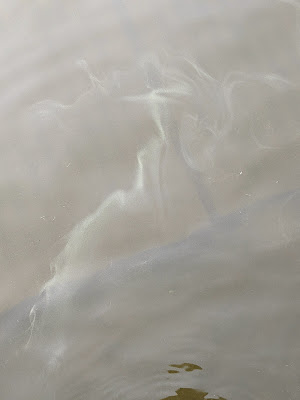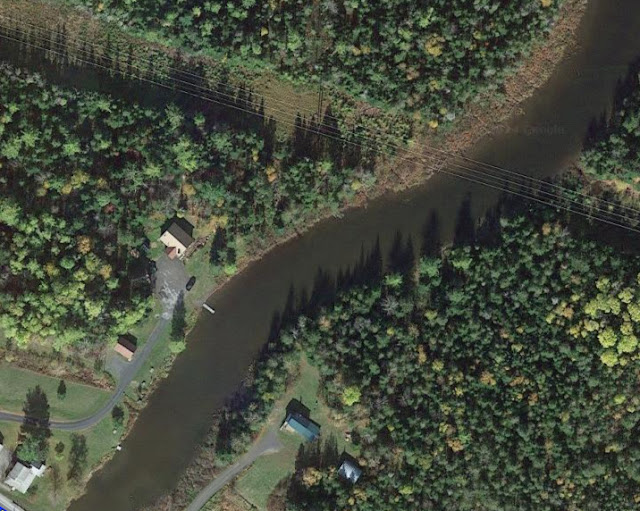Lake Madawaska is also, unfortunately, categorized as "Impaired" since it too harbors algal blooms due to excessive nutrient loading. The water was clearly and obviously full of algae so we declined to snorkel there - slimy green algae can be seen between plants below.
Dale borrowed a tandem kayak, and pushed the front seat all the way back against the rear one, so that he had a ton of room for his long legs - he thought it was pure luxury, but it's what the rest of us are used to! It was 16 feet long and very difficult to transport.
Interestingly, a large portion of the two basins of this 1,600 acre lake were also sparsely populated with plants, except for one or two rich areas. I was fortunate in being assigned some of the most productive and diverse habitats to survey - boy, was I thrilled! This is where we came across our first Bog lily, trailing buttercup in bloom, flowering water marigolds, water lobelias and a new native milfoil for me (in addition to the Northern and Alternate flowered water-milfoil): Farwell's water milfoil. So much to learn!
As you can see, the area was pretty spectacular and remote.
I got out of my kayak to 'use the (wild) facilities/bog,' and also investigate a terrestrial plant at the same time - I was pleased to confirm that it wasn't purple loosestrife. There were many interesting rocks with intriguing markings and textures on them, and then I noticed some bleached bones right near the shoreline - it looked like a collection of different animals. I made sure to pick some of them up before climbing back into my kayak - boy, were they stinky! Here is my collection of treasures, all cleaned up and ready for my nature display cabinet.

Ellie, Dale and I were teamed up for some of the time on Lake Madawaska. Our view scopes, used to help see down through the water column, weren't very useful because of the murkiness from algae. I usually float the scope off to one side of my kayak, where the light is best and oh, man, does one's neck hurt by the end of the day from keeping it turned one way for so long ... luckily we were so tired by the time we went to bed that even those aches and pains couldn't keep us awake.
 |
| Photo: D. Schultz |
This is our team on Madawaska
 |
| Photo courtesy of K. St Peter |















.jpg)










.jpg)

.jpg)




















